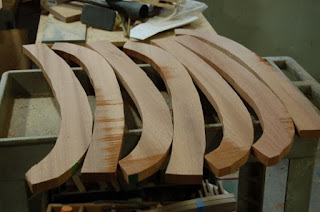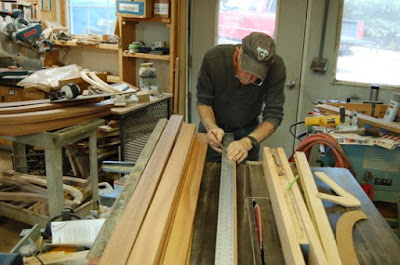Cover of the 1954 Annual Report featuring
1914 Dallas Railway & Terminal Co.
No. 454. This car operated every year in
Dallas from 1914 until 1954 and has operated
every year at Seashore Trolley Museum
since 1954. Incredible!
Ever wonder what the ride was like in 1958 at the Route One Terminal operation? Keep reading and you'll find the embedded link to a short video that includes vintage movie footage from the Terminal.
Click Here for 80th Anniversary Year -Seashore Trolley Museum 1939-1919
Click Here for the post - 80th Anniversary Year - A Look Back at the 60s -Seashore Trolley Museum
Click Here for the post - 80th Anniversary Year -A Look Back at the '70s -Seashore Trolley Museum
Click Here for the post - 80th Anniversary Year -A Look Back at the '70s -Seashore Trolley Museum
Click Here for The Birth of Seashore Trolley Museum Blog Post
Click Here for the 1901 Tower C Boston Elevated Railway to STM 1975 post
The General Manager's 1954 report includes
public operations for visitors for the first time.
It includes that Car 31 was found to be
in excellent mechanical condition even though
it had not operated for fifteen years.
This photo from the 1955 Annual Report shows a portion of
the Museum campus. This photo was taken from the
roof of the restoration shop (Shop 1).
The 1957 Annual Report, features, then
Governor of Maine, Edmund Muskie, in Boston,
inspecting Seashore's newest acquisition,
1903 No. 105, Cable Grip Cable Car from
Dunedin Cable Co.
1957 also saw the construction of track and overhead at the
new public operations of the Museum at Route 1 on the
Arundel/Biddeford town line. Seashore Junction Terminal
started operating in 1958. This image has the overhead work
being done at the visitor terminal building where guests would
board the cars.
Mid-Fifties visit Seashore Trolley Museum
by the Eaton family. Thank you to Ernie Eaton
for sharing. We would love to have others
share their family movie vids from
the 1950s, 1960s, 1970s, and 1980s.
1958 issue of "Historic Cars of Seashore Trolley Museum".
Here the cover features two Connecticut open cars operating
at the new Terminal operation.
By 1958, the Museum's collection had grown to more than
sixty pieces of railway equipment. Here is an image of the
Terminal operation at Route One.
The 1939 Liverpool Corporation Transport No.
293 was featured in the 1958 Annual Report
operating at the new Terminal operation, though
the double-decker tram didn't actually arrive at
Seashore until the spring of 1959.
The last electric trolley car to carry public passengers
in Maine was the 1926 York Utilities Co. No. 88.
April 27, 1947, was the final farewell excursion trip.
No. 88 is seen here on the Terminal line in 1958.
Page 1 of 2 lists the collection totaling more than 60 in 1958.
Liberty Bell - 1931 No. 1030
is seen here in an early fifties video during
walk-a-round of Seashore Trolley Museum
from Gerhard Salomom Collection
Page 2 of 2
Cars in the "new" South Boston yard. 1914 No. 454 Dallas,
1925 No. 144 Blackpool, & 1930 No. 621 Montreal &
Southern Counties.
~~~~~~~~~~~~~~~
Click Here: For the list of links to Theodore Roosevelt Maine Heritage Trail Posts in Easy Order to View
We continue the restoration work on the 1912 Narcissus, the only surviving high-speed, luxury interurban coach of the Portland-Lewiston Interurban.
Click Here: Narcissus Restoration-Related Posts
Being more than a century old, the stately, "Elegant Ride," Narcissus, is a gem. This shimmering precious stone of Maine transportation history is brilliantly resplendent as it emanates so many elements of history, including time, places, people, and events, that it was coupled to, that when just a smattering of its seemingly innumerable stories are shared, the contents first captivates, fascinates, then generates interest to learn more 🙋. The majestic Narcissus is listed in the National Register of Historic Places.
Please consider joining the epic journey to complete the Narcissus Project by making a donation today!
Click Here: Donation Options
The restoration of this majestic icon of Maine's electric railway history is but one in a series of captivating stories containing an abundance of incredible coalition of narratives.
Click Here: History-Related Posts - Narcissus and Portland-Lewiston Interurban
The Narcissus is featured in the national Gold Award-winning novel, Teddy Roosevelt, Millie, and the Elegant Ride. The "Elegant Ride" is the Narcissus. Theodore Roosevelt was a passenger on the Narcissus on August 18, 1914, between Lewiston and Portland, Maine, while campaigning for the Progressive Party candidates.
Click Here: Bookstores and Businesses promoting the Narcissus Project
Independent book publisher, Phil Morse, holding
the Gold Book Award Winner plaque for
Middle Reader category for The Eric
Hoffer Book Award. Congratulations to
award-winning Maine author,
Jean M. Flahive



























































